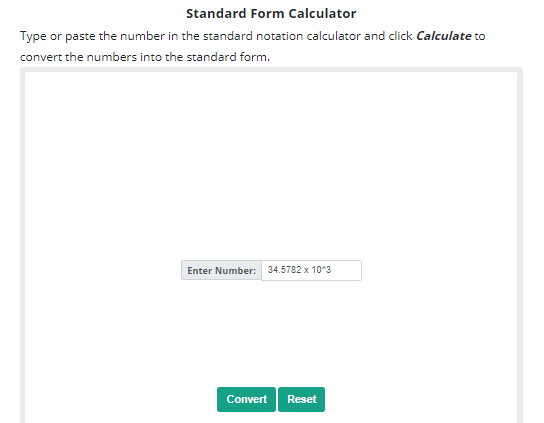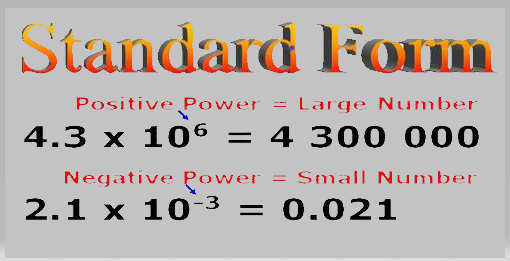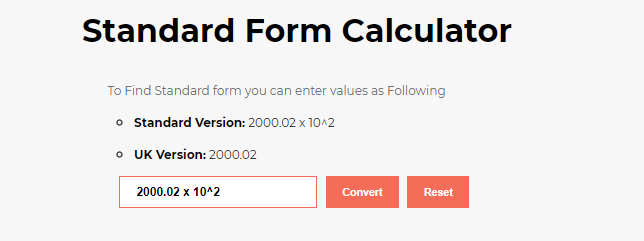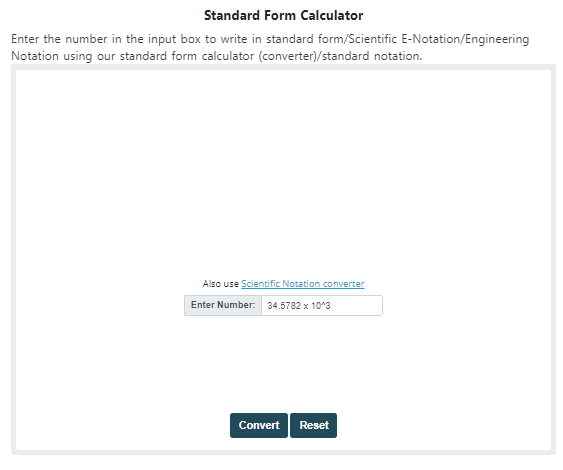The standard form is a useful way to express numbers that are too huge or too small to deal with. Thanks to Archimedes, who probably used it for the first time.
Interesting as it seems, he calculated the number of grains that could fill the universe and expressed that massive number in standard notation.
In ancient times, people used to deal with a handful of numbers to count or measure things. Then, as time passed, they engaged in scientific pursuits and had to deal with enormous numbers.
As a result, it was challenging to represent and perform calculations with them. Therefore, they invented a method to represent numbers called standard form. Nowadays, tools like standard notation calculator are available to get the standard form of numbers instantly.

How to define Standard Form?
Standard form or scientific notation is a style of writing numbers in a compact form to easily understand them. For this reason, numbers are written with a decimal point multiplied by powers of 10.

General formula:
In other words, you express the number as a × 10b, where a must be a number from 1-9 with a decimal point after it, and b can be any integer.
Here, a is coefficient, 10 is the base, and b is the exponent.
Examples of Standard forms of numbers:
Let’s see some examples of three different types of numbers and how we write them. These may enhance your clarity in the subject matter.
As an illustration, let’s take a typical number first. We write the number 49,000 as: 4.9 × 104
Likewise, 299792458 m/s is the speed of light and a large number. We write it as 3.0 × 108 m/s; 2 is converted to 3 because we round off the numbers as 9 > 5.
In the case of tiny numbers, we add the negative sign with the exponent. For example, the size of a skin cell is 0.000 030; we write it in standard notation as 3.0 × 10-6.
You can, however, use a standard form calculator to counter-check these results.

How to find the standard form of a number?
Perform these steps to find a standard index of a number:
- First, identify whether the number is big or small in terms of negative or positive exponents. You can do this by finding the decimal point.
If it contains a decimal point, then it will get a negative exponent, otherwise not. So, E.g., 0.00056 is smaller as compared to 560000.
- Place the point after the first digit and count the number of digits. For example, in 0.00056, you place the decimal point after 5 and count the digits from the left side.
In the case of 560000, you put the decimal point after 5 but count the numbers from the right side.
- Add the counted digits as exponents of 10 and multiply it with coefficient as 5.6 × 10-4 for 0.00056 and 5.6 × 105 for 560000.
- You can avoid all steps by using a standard form converter that directly calculates your answer.

Uses of this notation:
- As already said, it gives a standard to represent all numbers in a compact form because it shortens the length of a decimal or a long string. Thus, the number covers less space as compared to ordinary form.
- The numbers become easy to understand in this form. Anyone can comprehend a large or a small number by looking at this notation.
- This form makes arithmetic calculations and complex operations smooth. The addition, subtraction, multiplication, and division become handy.
For example:
Adding 6.2 × 104 and 3.8 × 103 is easy as compared to 62000 + 3800,
First, you change make coherent exponents as 62 × 103 and 3.8 × 103
After adding the answer is 65.8 × 103. Note that the exponents do not add in addition.
In like manner, multiplication and division also become less complex for the numbers become small. Such as 6.2 × 104 multiplied by 3.8 × 103 gives 23.56 × 107. Similarly, you can perform division.
Why do we multiply with 10?
10 is a magical number when it comes to expressing numbers. We use a base number of 10 with the power in exponents to simplify the number.
Moreover, it is easy to deal with base 10. In this number system, each digit is ten times more effective than the previous one, so we add the powers of 10 by convention.
We have been using the decimal number system for a long time since it is convenient to handle. For example, we can easily calculate the multiples of 10 without using a calculator.
To Sum Up:
The standard form has revolutionized scientific calculations. As a result, scientists and mathematicians can calculate precise results.
Moreover, they use standard notation in measuring and representing complex calculations with accuracy compared to ordinary notation, which relayed uncertainty in estimates.





